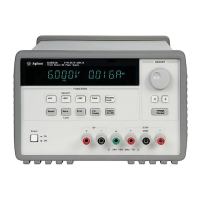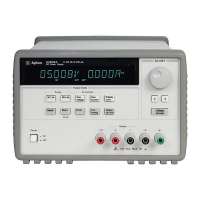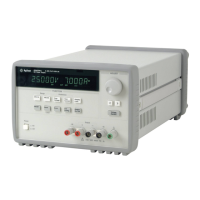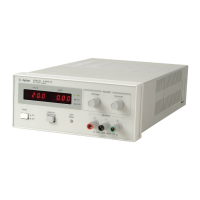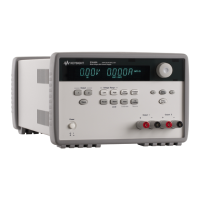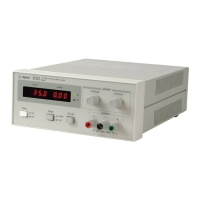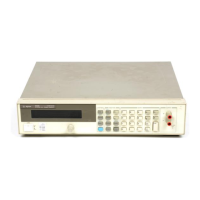Chapter 3 Calibration Procedures
Common Mode Current Noise
59
3
2
Turn on the power supply. Select the 8V/20A* or 25V/7A** range, enable the
output, and set the display to the limit mode. When the display i s in the limit
mode, program the current to full rated value (20.0 A)* or (7.0 A)** and the
voltage to the full rated value (8.0 V)* or (25.0 V)**.
3
The output current should be at the full rated rating with the CC annunciator
on. If not lit, adjust the load so that the output voltage drops slightly until the
CC
annunciator lights.
4
Divide the reading on the rms voltmeter by the load resistance to obtain rms
current. The readings shoul d be within the lim it of 2 m A .
Common Mode Current Noise
The common mode current is that ac current component which exists between
the output or output lines and chas sis ground. Common mode noise can be a
problem for very sensitive circuitry that i s referenced to earth ground. When
a circuit is referenced to earth ground, a low level line-related ac current will
flow from the output terminals to earth ground. Any impedance to earth ground
will create a voltage drop equal to the output current flow multiplied by the
impedance.
1
Turn off the power supply and connect a 100 k
Ω
resistor (R
S
) and a 2200 pF
capacitor in parallel between the (-) terminal and chassis ground.
2
Connect a digital voltmeter across R
S
.
3
Turn on the power supply. Select the 8V/20A* or 25V/7A** range, enable the
output, and set the display to the limit mode. When the display i s in the limit
mode, program the output to the full rated value (8.0 V and 20.0 A)* or (25.0 V
and 7.0 A)**.
4
Record the voltage across R
S
and convert it to current by di vidi ng by th e
resistance (DVM reading/100 k
Ω
). Note that the current is less than 1.5
μ
A.
*For Agilent E3633A Model **For Agilent E3634A Model
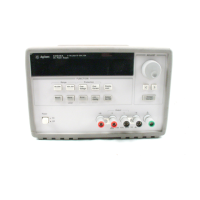
